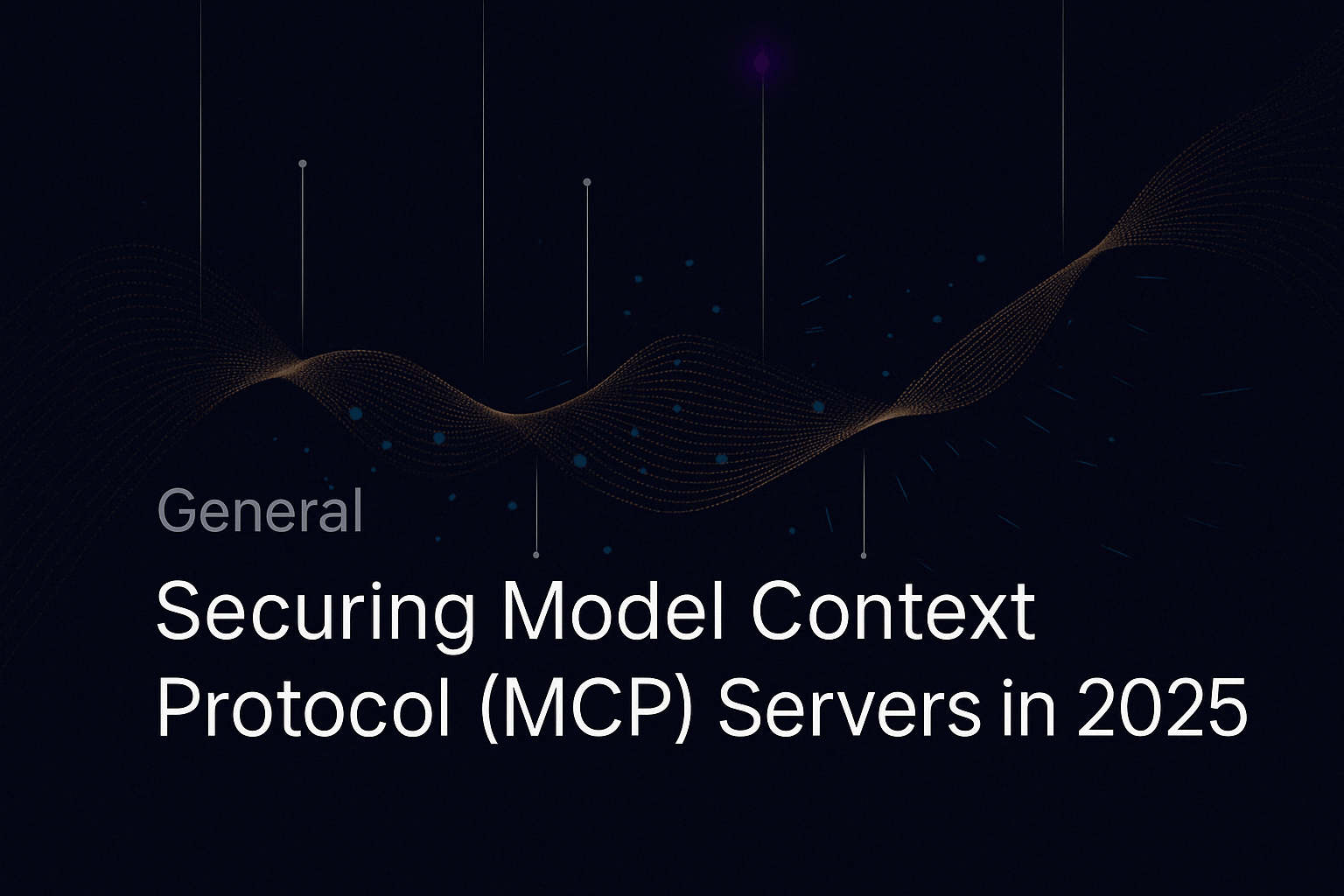Securing Model Context Protocol (MCP) Servers: Complete 2025 Guide

Securing Model Context Protocol (MCP) Servers in 2025
Hard‑ening the glue that powers autonomous AI
TL;DR — MCP servers give LLM agents super‑powers, but untreated they leak credentials and accept hostile code. This guide maps every common exploit to a concrete, copy‑paste‑able defense.
Table of Contents
- What Is MCP & How It Works
- Core Attack Vectors in MCP Deployments
- Holistic Defense Strategy
- Quick‑Start Hardening Checklist
- Bottom Line
What Is MCP & How It Works
Model Context Protocol (MCP) is an open JSON‑RPC / WebSocket standard that gives large‑language‑model (LLM) agents structured, real‑time access to external data and tools. Imagine it as a USB‑C port for AI: once an application speaks MCP, any compliant model or agent can plug into any compliant back‑end without custom glue code, unlocking autonomous, multi‑step workflows.
Core Attack Vectors in MCP Deployments
Stdio vs SSE Architecture
| Mode | How it Works | Why Engineers Love It |
|---|---|---|
| Stdio | The server runs as a local child process; messages flow over stdin/stdout pipes. | • Near‑zero latency, ideal for offline or edge dev.<br>• Single binary—no HTTP stack needed. |
| SSE | The server lives behind an HTTPS endpoint that streams events via Server‑Sent Events. | • Internet‑ready for multi‑tenant SaaS.<br>• Scales horizontally & slots behind existing auth proxies. |
Reality Check: Stdio still dominates local agent frameworks, but its convenience hides two critical risks: credential leaks and injection‑style payloads.
Credential‑Leak Scenarios
- Environment‑Variable Spill — Hard‑coded API keys or DB URLs linger in shell histories and
/proc/$pid/environ. - No Transport‑Layer Auth — Pipes have no TLS handshake or bearer‑token exchange.
- Container Copy‑Paste —
.envfiles too often sneak into public Docker images “just for testing.”
SQL & Code‑Injection Payloads
Because an MCP server can expose any downstream resource—from a Postgres database to an S3 bucket—LLM‑generated commands may carry malicious intent such as DROP TABLE users; --.
- Dynamic Paths: Agents craft raw SQL, CLI flags, or JSON bodies on the fly.
- Over‑trust: “The model wouldn’t do that” is a myth—prompts are not guard‑rails.
- Multi‑Hop Exploits: A public chatbot can pass an unsafe query straight into a private MCP layer.
Holistic Defense Strategy
Just‑In‑Time (JIT) Access
| Goal | Implementation Tips |
|---|---|
| Slash secret lifetime | Issue 5‑15 min JWTs or AWS STS creds when the agent spins up. |
| Bind scope to intent | Create the token after you know what the user will do; e.g., read‑only Postgres for 30 s. |
| Auto‑revoke | Revoke credentials on process exit, crash, or timeout via your IdP’s API. |
SSO‑Driven Integration Flow
- OIDC Reverse Proxy — Put every MCP endpoint behind an OpenID‑Connect proxy so end‑users MFA once and secrets never hit pipes.
- Consent Window — Show a familiar “Grant Access” UI the first time an agent meets a new tool.
- Unified Audit — Central IdP logs every scope approval and MFA step.
Operational Perimeter & Least Privilege
- Domain‑Specific Commands — Replace universal
sqlwith typed endpoints likegetInvoice,listUsers. - Row‑Level Security — Even if SQL slips through, it only sees its own tenant’s slice.
- Capability Manifest — Ship a
manifest.jsonenumerating every command, arg shape, and verb; agents can’t call what isn’t advertised.
End‑to‑End Auditability
- Structured JSON Logs — Include
request_id, user ID, prompt hash, latency, and downstream effect. - Immutable Storage — Stream logs to append‑only sinks (Loki, CloudWatch Logs).
- Replay CLI — Reconstruct the chain: prompt → MCP request → DB mutation in seconds.
Quick‑Start MCP Server Hardening Checklist
| ✔︎ | Control | 30‑Day Target |
|---|---|---|
| ☐ | Containerize Stdio servers (--pid=private, drop host net) | All dev & prod Stdio isolated |
| ☐ | Rotate secrets via Vault/KMS/Adaptive; no .env in git | All creds ≤ 15 min TTL |
| ☐ | Capture every command/response and log them | 100 % coverage in SIEM |
| ☐ | Log & trace every call; retain ≥ 90 days | Replay tool proves lineage |
| ☐ | Fuzz prompts daily and verify guards fire | Red‑team pipeline runs nightly |
| ☐ | Use Adaptive | Secure every MCP server in the org |
Bottom Line
Local ≠ Safe • Model Input ≠ Sanitized • Convenience ≠ Governance
Lock down your credentials, wrap every call in least‑privilege policy, and treat every generative query as potentially hostile—the future of secure, autonomous AI depends on it.
 SOC2 Type II
SOC2 Type II

